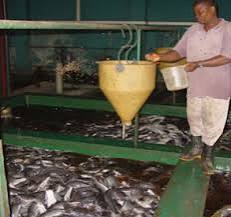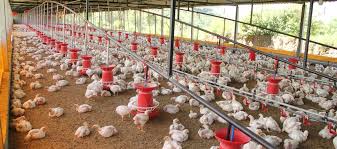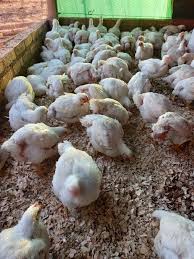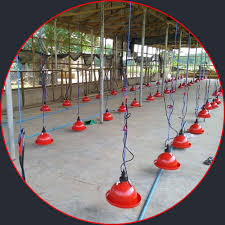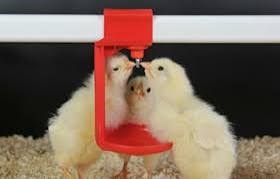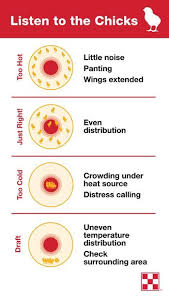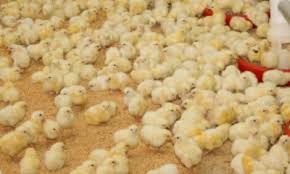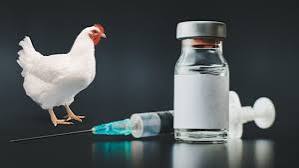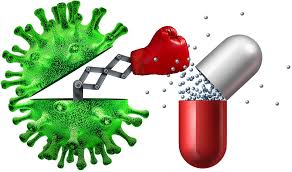The three major methods of feeding fish are;
1. Spot Feeding
2. Broadcast Feeding
3. Responsive Feeding
These are feeding methods that wield significant influence over the health and growth of the aquatic inhabitants.
Spot Feeding
Spot feeding is the feeding method that involves the strategic deployment of feed directly to targeted areas within the pond. Here, efficiency reigns supreme, as only the intended beneficiaries partake of the feast. It’s a symphony of control and accuracy, where wastage is minimized, and growth optimized.
In spot feeding, one side of the fish pond is targeted and the feed is thrown on that side and all the fish gather there for their share of the feed. Often, the stronger or active ones always get more of the feed.
Advantages of Spot Feeding
1. Reduced Feed Wastage
When you target specific areas, spot feeding minimizes the likelihood of feed being consumed by non-target organisms or sinking to the pond’s bottom, resulting in reduced wastage of feed
2. Optimized Growth
The precise control offered by spot feeding allows fish farmers to tailor feeding strategies to individual fish or specific groups, promoting optimal growth and health within the fish populate
3. Enhanced Water Quality
With less uneaten feed accumulating in the pond, spot feeding contributes to improved water quality by reducing the risk of nutrient buildup and subsequent water pollution.
Disadvantages of Spot Feeding
1. Labor Intensive
When you practice Spot feeding, it can be labor-intensive, requiring fish farmers to identify feeding hotspots within the pond and manually distribute feed to those areas
2. Technical Skill Required
Choosing and Implementing spot feeding effectively requires a certain level of technical skill and an understanding of fish behavior and feeding patterns.
3. Limited to Small Scale
While suitable for smaller ponds or operations with manageable stocking densities, spot feeding may become impractical in large-scale operations.
Broadcast Feeding
Broadcast Feeding, as the name suggests, is the method of feeding where the fish farmer throws and spreads the feed in almost all the places of the fish pond.
In this method, you don’t just throw in one corner or place but spread it to allow each fish to get its share wherever it is.
This is often suitable for large fish pond operations where it will be difficult for all the fish to gather at one corner for the spot-feeding method.
Advantages of Broadcast Feeding
1. Ease of Implementation
Practicing Broadcast feeding is straightforward and requires minimal effort to implement. This makes it suitable for larger ponds or operations with high stocking densities.
2. Time Efficiency
Since feed is spread uniformly across the entire pond surface, broadcast feeding saves time compared to the labor-intensive process of spot feeding.
3. Suitable for All Fish
Broadcast feeding caters to the natural feeding behaviors of fish, allowing all fish within the pond to access the feed, regardless of their location, size, and strength.
Disadvantages of Broadcast Feeding
1. Feed Wastage
One of the primary drawbacks of broadcast feeding is the potential for increased feed wastage, as some feed may not be consumed by the intended fish and may instead be lost to the environment.
2. Unequal Distribution
In larger ponds, ensuring uniform feed distribution across the entire surface can be challenging, leading to uneven feeding and potential disparities in fish growth.
3. Water Quality Concerns
The excess feed not consumed by fish may accumulate at the pond bottom, contributing to nutrient buildup and degraded water quality if not properly managed.
Responsive Feeding
The Responsive Feeding method may combine both spot feeding and broadcast feeding. It involves throwing fish feed into the fish pond and observing how the fish is responding, acting, and behaving towards the feed.
It does not matter whether you are using the spot feeding method or broadcast feeding method, what matters is observing how the fish respond to the feed.
Advantages of Responsive Feeding
1. Control Feeding Quantity
The responsive feeding method enables you to determine how much quantity of feed your fish want. This helps prevent over-feeding or under-feeding.
2. Avoid Fish Wastage
This Fish feeding method helps prevent over-feeding which will result in feed wastage. Because you observe how the fish respond to the feed, when they are satisfied, you can observe and stop giving them more feed.
3. Quality Water Management
Since you can control over-feeding, it means the water quality will not be jeopardized due to feed waste that may accumulate under the fish pond.
4. Detect When Something Is Wrong With The Fish
Healthy fish is characterized by a high appetite. So Responsive Feeding will tell when the fish have a high appetite and when they do not. When you observe that they are not active toward the food, it means there is something wrong with them. Therefore you can find treatment before is out of hand.
Disadvantages of the Responsive Feeding Method
1. Time Consumption
The Responsive Feeding Method consumes time since you have to stand and observe how the fish is responding to the feed while giving more. Unless just throwing some quantity and moving away, in the responsive method you need to wait to observe.
If you don’t have patience, you may choose just throw a certain quantity which many times comes with consequences.
2. Difficult Keeping Track
The Responsive Feeding Method doesn’t give the same quantity of feed every day. Each day has a unique quantity the fish consume depending on their appetite that day. Because of that, if no proper record keeping, it will be difficult to tell how much quantity they take for a day for a long time. Unless you record the quantity they consume every day to be able to keep track.
3. Unequal Distribution of Feed
When you observe while feeding, often the strong and active ones can get the feed first before the weak or small ones. Therefore, when they slow down and you think they are satisfied, sometimes that is when the weak ones can access the feed. So once you stop at that point, the weak ones will not always be able to eat and therefore not grow exponentially.
Making the Right Choice
As farmers navigate the feeding methods in their fish farming, the decision between spot feeding, broadcast feeding, and responsive feeding emerges as a pivotal juncture.
Pond size, stocking density, and management preferences all play a role in shaping this decision. It’s a delicate balance between precision and simplicity, where the right choice hinges upon a nuanced understanding of one’s unique circumstances.
Before choosing any feeding method, weigh all of them to determine the one that fits your farm and preference best.
The feeding methods selection is sometimes also influenced by the type of feed selected.
Is better to seek experts advice on the best method to feed your fish. Check out the Best Aquaculture Experts for your aquaculture journey.
READ ALSO: THE 14 SECRET OF PROFITABLE FISH FARMING(must read for every fish farmers)
Conclusion
In the vast expanse of fish farming, the choice between spot feeding, broadcast feeding, responsive feeding, or any feeding method serves as a compass guiding farmers toward efficiency and productivity.
Each method offers distinct advantages and disadvantages, each suited to different needs and circumstances.
By delving into the intricacies of these feeding techniques, farmers can chart a course toward optimized feeding practices and ensure the flourishing of their aquatic charges.
Recommendation
I recommend that you get an Automatic Feeder which is best, time, and energy saving.
Click HERE to join our WhatsApp group

